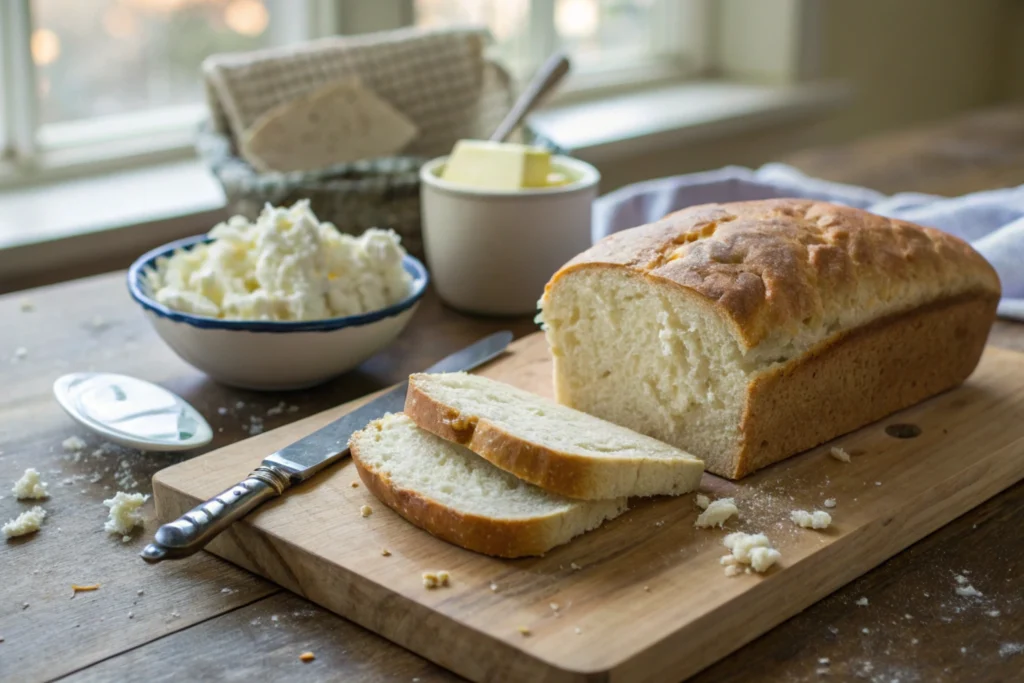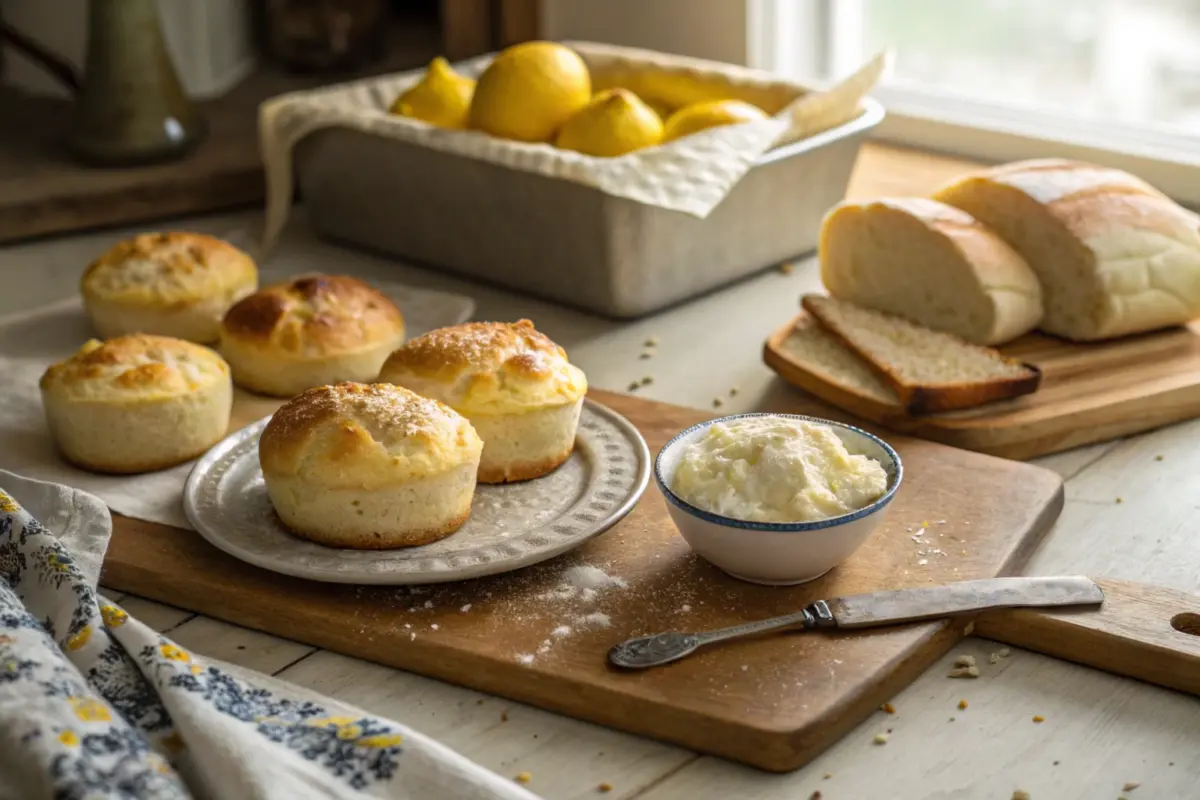When you think of baking, cottage cheese might not be the first ingredient that comes to mind. But trust me, it’s a secret weapon that can change your recipes in surprising ways. From adding a touch of creaminess to improving the structure of your baked goods, cottage cheese brings something unique to the table.
Introduction
Baking is a delightful mix of art and science, where every ingredient plays a crucial role. While staples like butter, milk, and cream often steal the spotlight, cottage cheese is quietly making its way into more recipes. It brings moisture, protein, and a hint of tanginess that enhances both texture and flavor.
Not only is it versatile, but it’s also a healthier option compared to some traditional ingredients. Whether you’re trying to add creaminess without guilt or looking for a way to keep your baked goods moist, cottage cheese is the answer.
To explore more on how cottage cheese works in baking, check out What Happens to Cottage Cheese When You Bake It? for insights on its transformative properties.
The Role of Dairy in Baking
Dairy products are essential in baking for their moisture, flavor, and texture-enhancing properties. Cottage cheese, with its high protein content and mild flavor, offers a unique twist on these traditional roles.
If you’re curious about other innovative uses of cottage cheese, the Cottage Cheese Egg Bake showcases its versatility in savory recipes, blending seamlessly with eggs for a hearty bake.
Understanding the Functions of Dairy Products
Dairy serves multiple functions in baking. It provides fats for richness, proteins for structure, and liquid for binding ingredients together. Think of how milk makes cakes tender or how cream gives pies a silky finish. Cottage cheese, with its high protein content and mild flavor, offers a unique twist on these traditional roles.
How Cottage Cheese Compares to Other Dairy Options
Compared to milk, cream, or even yogurt, cottage cheese stands out because of its curd-like texture and higher protein levels. While milk is mostly liquid and cream is all about fat, cottage cheese offers a balance that can bring both moisture and structure to baked goods. It’s like the best of both worlds!
Nutritional Benefits of Cottage Cheese in Baking
Cottage cheese boasts a high protein content and reduced fat, making it a healthier option for baking. It adds structure, moisture, and a creamy texture, all while being kinder to your waistline.
For a closer look at why cottage cheese pairs so well with eggs and other ingredients, see Why Put Cottage Cheese in Eggs? to explore its nutritional and flavor-enhancing qualities.
High Protein Content for Improved Structure
The protein in cottage cheese acts like a building block in baking. It helps create a firm yet tender structure in cakes, muffins, and bread. This makes it especially great for recipes that need a little extra support to rise and hold their shape.
Reduced Fat Content for Healthier Options
If you’re watching your fat intake but still want rich, flavorful baked goods, cottage cheese is a fantastic choice. With less fat than cream or butter, it keeps your recipes light without compromising on taste or texture.
Texture Enhancements with Cottage Cheese
If you’ve ever wanted your baked goods to be moist and tender without being heavy, cottage cheese is the answer. Its unique texture and composition bring balance to recipes, creating treats that are soft, satisfying, and anything but dry.
How Cottage Cheese Affects Crumb Texture
Cottage cheese adds a creamy richness to the crumb of baked goods, giving them a delicate, melt-in-your-mouth quality. Whether it’s muffins, cakes, or quick breads, the curds gently break down during baking, creating a fine and even crumb structure.
Creating Moisture in Baked Goods
No one likes a dry cake or cookie. Cottage cheese brings moisture without making things overly dense. The natural water content in cottage cheese seeps into the batter, keeping your baked goods fresh and tender long after they’ve come out of the oven.
Flavor Contributions of Cottage Cheese
Cottage cheese doesn’t just enhance texture; it also works magic on flavor. Its mild yet slightly tangy profile makes it a great choice for both sweet and savory recipes, adding depth without overpowering other ingredients.
Enhancing Sweet and Savory Notes
In sweet recipes, cottage cheese amplifies the richness of flavors like vanilla, chocolate, and fruit. In savory dishes, it complements ingredients like herbs, spices, and cheeses, adding a subtle creaminess that ties everything together.
Unique Tanginess and Its Impact on Recipes
The gentle tang of cottage cheese adds a layer of complexity to baked goods. It’s especially great in recipes where a touch of acidity can brighten the overall flavor, like in lemon cakes or savory breads. Think of it as the ingredient that quietly takes your recipe to the next level.
How to Prepare Cottage Cheese for Baking

To get the most out of cottage cheese in your baking, a little prep work goes a long way. The texture of cottage cheese can vary, so it’s important to adjust it based on what your recipe needs. Don’t worry—it’s quick and easy to do.
Draining Excess Liquid for Optimal Results
Some recipes call for a thicker consistency, so draining the excess liquid from cottage cheese is key. You can do this by placing it in a fine-mesh sieve or cheesecloth and letting it sit for a few minutes. This step ensures your batter doesn’t become too runny.
Blending for a Smooth Consistency
For recipes like cakes or cheesecakes, a smooth consistency is essential. Simply blend cottage cheese in a food processor or blender until it’s creamy and lump-free. This makes it easier to incorporate into your batter without affecting the texture.
Types of Baked Goods That Benefit from Cottage Cheese
Cottage cheese works its magic in a variety of baked goods. From tender cakes to hearty breads, it’s the ingredient you didn’t know you needed. Let’s explore where it fits best and why it’s worth trying.
Cakes and Cheesecakes
If you’re looking for a way to make cakes and cheesecakes lighter yet creamy, cottage cheese is a fantastic choice. It brings a rich texture without the heaviness of full-fat cream cheese, making desserts like lemon cheesecake or sponge cakes a little less indulgent but just as satisfying.
Breads and Buns
For those who love soft and fluffy bread, cottage cheese is a game-changer. Its moisture content keeps bread fresh longer, while its protein helps create a tender crumb. Think about adding it to dinner rolls, sandwich loaves, or even a quick zucchini bread for an extra touch of richness.
Savory Pies and Quiches
When it comes to savory recipes, cottage cheese shines in pies and quiches. It blends beautifully with eggs, vegetables, and spices to create creamy, flavorful fillings. Whether you’re whipping up a classic spinach quiche or a hearty meat pie, cottage cheese adds depth and a silky texture.
Substituting Cottage Cheese in Traditional Recipes
If you find yourself out of ricotta or cream cheese, cottage cheese can step in as an excellent alternative. With a few simple adjustments, you can swap it into recipes without sacrificing taste or texture.
Replacing Ricotta Cheese
Cottage cheese can easily stand in for ricotta in dishes like lasagna or stuffed pasta shells. To get a similar creamy texture, blend the cottage cheese until smooth. While it has a slightly tangier flavor, this can actually enhance savory recipes in a delicious way.
Alternative to Cream Cheese
If cream cheese isn’t on hand, blended cottage cheese is a great substitute for recipes like cheesecake or frosting. You can tweak the flavor by adding a bit of sugar or lemon juice to balance its tanginess, ensuring your desserts turn out just as expected.
Techniques for Incorporating Cottage Cheese
While cottage cheese is incredibly versatile, how you use it matters. Paying attention to how you mix and balance it with other ingredients can make all the difference in your final bake.
Mixing Methods for Even Distribution
For best results, cottage cheese should be evenly incorporated into your batter or dough. To do this, blend it into a smooth consistency for recipes like cheesecakes, or gently fold it into batters like muffins or quick breads to avoid overmixing. This ensures you don’t end up with uneven textures.
Balancing Cottage Cheese with Other Ingredients
Because cottage cheese has a distinctive tangy flavor, pairing it with complementary ingredients is key. In sweet recipes, vanilla, cinnamon, or citrus zest can balance its tanginess. In savory bakes, it works beautifully with garlic, dill, or even shredded cheese for an extra kick.
Common Challenges When Baking with Cottage Cheese
While baking with cottage cheese is generally easy, a few challenges might pop up. Knowing how to address these can help you bake with confidence and achieve perfect results every time.
Overcoming Excess Moisture Issues
One of the most common issues with cottage cheese is its high moisture content. To prevent your batter from becoming too runny, drain the cottage cheese using a fine mesh sieve or cheesecloth before adding it to your recipe. If you’ve already mixed it in, a touch of extra flour or another dry ingredient can help balance things out.
Preventing Curd Separation
When baked at high heat, the curds in cottage cheese can sometimes separate. To avoid this, make sure you blend the cheese until smooth if the recipe calls for it. Additionally, incorporating it into a well-mixed batter can help protect the curds from direct heat, resulting in a creamy finish.
Popular Cottage Cheese Baking Recipes
Not sure where to start? These recipes highlight the versatility of cottage cheese and are guaranteed crowd-pleasers. They’re simple, delicious, and showcase just how transformative this ingredient can be.
Lemon Cottage Cheese Cake
This light and zesty cake is perfect for spring and summer. The cottage cheese adds creaminess to the batter, while the tangy lemon flavor keeps it refreshing. It’s a great dessert to serve at gatherings or enjoy as a treat with your coffee.
Quick Cottage Cheese Buns
If you’re in the mood for soft, savory buns that are easy to make, this recipe is for you. Cottage cheese keeps the buns tender and flavorful, making them perfect for sliders, sandwiches, or as a side for soups and salads.
Savory Cottage Cheese Bread
This hearty bread combines the tanginess of cottage cheese with the bold flavors of herbs and spices. It’s an excellent choice for dipping into soups or serving alongside a robust stew. The moisture from the cheese ensures it stays fresh longer than your typical loaf.
Cottage Cheese in Modern Baking Trends
Cottage cheese has become a trendy ingredient, thanks to its versatility and health benefits. Social media has sparked new and creative ways to bake with it, inspiring bakers everywhere to think outside the box.
Viral Cottage Cheese Recipes on Social Media
From high-protein bagels to cheesecake-flavored smoothies, cottage cheese is stealing the spotlight in viral recipes. Platforms like TikTok are filled with innovative ideas that prove how adaptable and nutritious this ingredient can be.
Experimenting with Innovative Combinations
Cottage cheese pairs surprisingly well with a variety of flavors. You can try blending it with unexpected ingredients like matcha, tahini, or even smoked paprika for unique twists on classic recipes. It’s an ingredient that invites creativity in the kitchen.
FAQ About Baking with Cottage Cheese
Why do you use cottage cheese in baking?
Cottage cheese is used in baking to add moisture, protein, and a slight tanginess. It enhances the texture of baked goods, making them tender and creamy, while also offering a healthier alternative to heavier ingredients like butter or cream.
What happens to cottage cheese when you bake it?
When baked, cottage cheese softens and blends into the batter, resulting in a smooth and creamy texture. The tangy flavor mellows during baking, adding a subtle richness to both sweet and savory recipes.
Will cottage cheese melt in the oven?
Cottage cheese doesn’t melt like butter or shredded cheese. Instead, its curds soften, becoming part of the dish’s overall texture. When blended into batters, it creates a creamy consistency rather than melting away.
Can cottage cheese replace butter in baking?
While cottage cheese can’t directly replace butter in all recipes, it works well in certain baked goods where moisture is more important than fat, such as muffins or quick breads. It’s a great option for lighter, healthier baking.
Conclusion
Cottage cheese is an unsung hero in baking, offering moisture, protein, and a subtle tang that enhances both sweet and savory recipes. It’s not only versatile but also a healthier alternative to heavier ingredients like butter or cream cheese, making it a great choice for lightened-up bakes. From tender cakes to fluffy breads, cottage cheese brings a unique texture and flavor that elevates your creations.
If you’re new to using it, start simple with recipes like quick buns or a lemon cottage cheese cake. These options showcase its potential while being easy to follow. Once you’re comfortable, feel free to get creative by experimenting with innovative combinations and flavors. Whether you’re baking for health or flavor, cottage cheese proves its worth every time. So grab a tub and start exploring all the delicious possibilities it offers!

